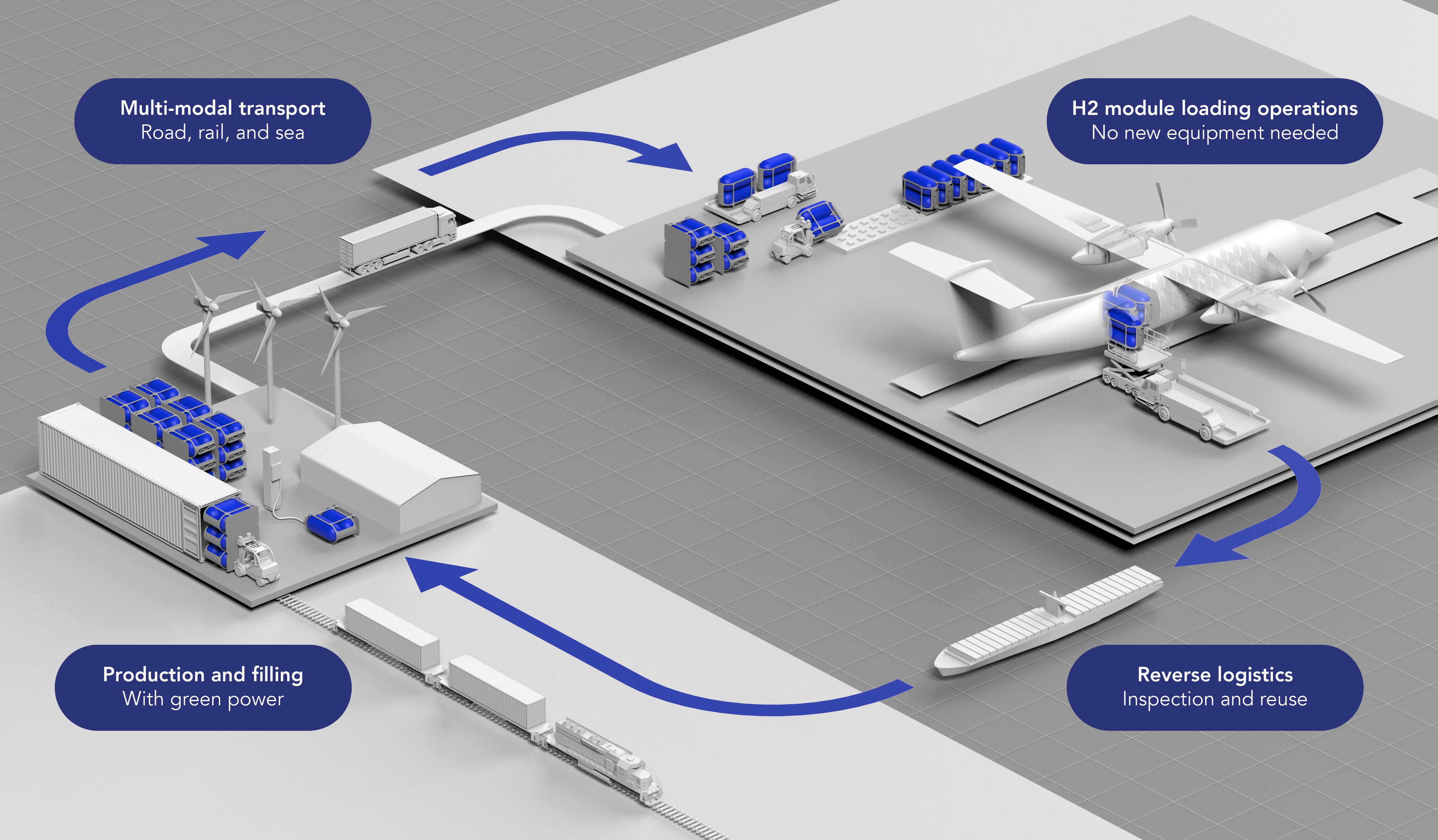Click Here to View This Page on Production Frontend
Click Here to Export Node Content
Click Here to View Printer-Friendly Version (Raw Backend)
Note: front-end display has links to styled print versions.
Content Node ID: 419447
The Vertical Flight Society (VFS) is staging a public conference to address the potential use of hydrogen for aviation fuel. The first H2-Aero Symposium & Workshop will be held in Long Beach, California, from March 29-31, and will include officials from California, where the state government is strongly advocating for the adoption of hydrogen for multiple applications.
There will be presentations from executives with companies developing new hydrogen-powered aircraft and the fuel cell-based powertrains these will use. Companies present at the symposium will include Airbus, Bartini, Piasecki Aircraft, Zero Avia, Shell, HyPoint, Plug Power, Universal Hydrogen, and Zev Station. Attendees will be able to tour the Shell heavy-duty hydrogen refueling station at the Power of Long Beach.
U.S. government involvement in the event will include representatives from the U.S. departments of energy and defense, as well as NASA. From Europe, the DLR German Aerospace Center will participate, along with its partner H2Fly, which is working on a new hydrogen regional airliner. Other participants include the California Fuel Cell Partnership, the Massachusetts Hydrogen Coalition, the University of Maryland, and investment group Nexa Capital.
Despite significant efforts to curb greenhouse gas emissions, the aviation sector’s total carbon dioxide (CO2) output continues to grow. In 2018, it was 1.04 billion tonnes, which represented a 4 percent increase from 2010's figure. That said, there is a silver lining.
“Much of the sustainable innovation that aviation has invested in over the past decade is just now coming to fruition,” Anita Sengupta, CEO and founder of HydroPlane, told the Vertical Flight Society’s recent Transformative Vertical Flight conference. “As this technology is integrated into existing and future aircraft, we should see the industry’s carbon footprint begin to shrink.”
A prime example of this is electrification, which has the potential to move the needle toward net-zero emissions. But, as Sengupta explained, how far that needle moves depends on how aircraft are electrified, and her California-based start-up is working to make green hydrogen a primary energy source for propulsion.
“Right now, the most popular approach to electrification is batteries,” she said. “However, battery-powered aerial vehicles have a limited range, a low payload fraction, and reduced operational efficiency due to charging time.”
Then there’s hydrogen power, which, according to Sengupta—who is a former NASA rocket scientist and an instrument-rated pilot—addresses all of battery electrification’s shortcomings.
First and foremost is range, as any reduction in the weight of the energy storage system results in a gain in range and payload capacity. “The huge opportunity for hydrogen is that it offers a 10-fold improvement in energy density over state-of-the-art lithium-ion batteries and has a threefold improvement over hydrocarbon fuels,” added Sengupta.
Then there’s the operational advantage. “Charging a battery electric vehicle takes time and is not very efficient,” said Sengupta. “With hydrogen, you’re basically refueling, so the turnaround time is similar to what one can expect from a traditional avgas aircraft.”
There’s also the carbon advantage: if fully adopted, Sengupta says, hydrogen fuel cell power plants could reduce global air travel’s CO2 output by at least 50 billion tons by 2050.
So, where’s the catch?
“The fact that hydrogen is a low-density gas raises a number of unique challenges, particularly as to storing it onboard your aircraft and finding a cost-effective way to transport it from source to airfield,” Sengupta explained.
Another challenge concerns the type of hydrogen. Right now, most hydrogen on the market is what is called grey hydrogen, meaning it is produced using a hydrocarbon reforming process and therefore has a CO2 output.
Green hydrogen, on the other hand, is made from renewable energy. While it offers zero emissions, it comes at a higher cost. “From an aviation perspective, we really have to drop the cost of green hydrogen to make it a viable fuel source,” noted Sengupta. Speaking before the oil and natural gas prices soared dramatically in the wake of Russia's invasion of Ukraine, she predicted that the cost of hydrogen will fall significantly on world markets by 2030.
With funding from the U.S. Air Force’s Agility Prime program, HydroPlane is developing the technology needed to get green hydrogen into a range of aircraft, starting with smaller platforms like eVTOL aircraft and working up to regional airliners. The company is in stealth mode, so details about its modular hydrogen fuel cell power plant are scarce. What we do know is that it will include a custom fuel cell, store hydrogen in liquid form, and be able to get up to 1 MW of power.
“Our goal as a company is to improve the actual electrical efficiency of the powerplant, which we have done by about 20 percent compared to the state-of-the-art, and to make it modular to support platforms ranging from 200 to 700 horsepower,” said Sengupta.
Last year, the company finished prototyping a platform capable of providing an estimated range of 1,000 km (621 miles) and a 250-km/h (155 mph) cruise speed. It expects to start demonstrations this year, with certification to follow in 2023, at which point it will make its yet-to-be-named product available to both aircraft owners and manufacturers.
